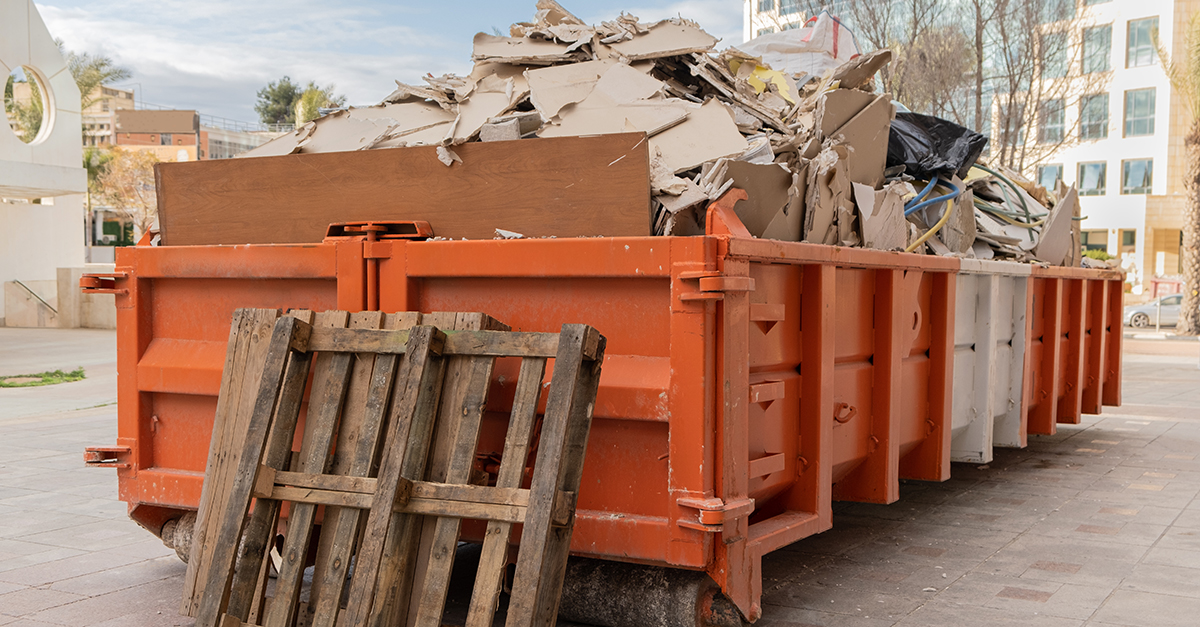Construction and demolition (C&D) are frequent activities in nonresidential facilities, presenting both a challenge and an opportunity for waste management. Whether they are office complexes, industrial sites, or public buildings, these facilities generate vast amounts of waste during construction and renovation processes.
Each year, the United States sees an estimated 600 million tons of waste from C&D activities, according to the U.S. Environmental Protection Agency (EPA). This waste contributes to approximately 40% of the nation’s total solid waste output, Industrial Safety and Hygiene News reports. The scale of this waste highlights the critical need for effective and sustainable waste management strategies. C&D waste is composed of diverse materials, ranging from concrete, bricks, and metals to more complex and hazardous materials such as asbestos, contaminated soil, and chemical-laden paints. Proper handling and disposal of these materials are crucial, not only to comply with regulations but also to protect the environment and human health. Understanding the specific challenges and potential solutions in managing C&D waste is essential for facility managers involved in recycling and waste management.
One of the most significant insights for waste management professionals is the potential for substantial waste recovery. With proper minimization methods, waste segregation strategies, and resource management, it is possible to recover between 80% and 90% of the waste that would otherwise end up in landfills. This recovery rate represents a significant opportunity to reduce environmental impact, lower disposal costs, and contribute to the circular economy by repurposing materials that would otherwise be discarded.
Create a custom plan
Effective waste management begins with thorough planning. Customize the plan to the specific needs of each project, considering the types of materials involved and the waste streams generated. For example, large office buildings undergoing renovation may produce substantial amounts of concrete, metals, and glass, while industrial sites might generate more hazardous waste, such as chemicals and contaminated soil. By anticipating these needs and integrating waste management strategies from the outset, facilities can minimize waste generation and improve the efficiency of recycling and disposal processes.
Consider specialized trash and recycling pickup services to manage waste. These services are designed to handle the unique demands of C&D, which often require different processing methods
than standard commercial waste.
For instance, using construction-grade compactors on site can significantly reduce the volume of waste, making it more manageable to transport. Rentals of roll-off dumpsters also facilitate efficient segregation and collection of materials, which is critical to maximize recycling rates and minimize contamination.
Choose repurposed materials
Facility managers involved in waste management also need to advocate for and implement deconstruction practices wherever feasible. Deconstruction involves carefully dismantling
sections of buildings to salvage materials for reuse, as opposed to traditional demolition, which often results in most materials being sent to landfills. This approach reduces the volume of waste generated and enables the recovery of valuable resources that can be reused in future construction projects. For example, construction and remodeling projects can repurpose reclaimed wood, bricks, and architectural features, reducing the use of materials and conserving resources.
Resource reduction methods are another vital aspect of sustainable waste management in facilities. These methods include designing buildings with modular components that can be easily disassembled and reused or selecting materials that are easier to recycle. By incorporating resource reduction strategies into the design and construction phases, facilities can create buildings that are more sustainable and adaptable, reducing the need for future demolition and remodeling waste.
Moreover, purchasing used C&D materials or those with recycled content is an effective strategy to reduce the environmental impact of new construction projects. By opting for materials already in the construction cycle, facilities can decrease the demand for virgin resources, thereby lowering their environmental footprint. This approach also creates demand for recycled materials, which can help make recycling programs more economically viable.
Cost is often a significant consideration for facilities when implementing waste management strategies. While recycling and sustainable practices can involve higher upfront costs, the long-term benefits often justify the investment. For example, reducing landfill use can result in lower disposal fees, which are particularly high in areas with limited landfill space. Additionally, many local governments offer incentives for businesses that adopt sustainable practices, such as tax breaks and grants, which can help offset the initial costs of setting up recycling programs.
Take a comprehensive approach
Managing C&D waste in facilities requires a proactive approach that includes thorough planning, investment in the right tools and services, and a strong commitment to recycling and reuse. For waste management professionals, the potential to recover significant amounts of C&D waste through effective strategies not only helps in achieving environmental goals but also offers economic advantages.
As the construction and facility management industries continue to evolve, the importance of adopting sustainable waste management practices will only increase. Facilities must stay ahead by implementing best practices that protect the environment and contribute to a more sustainable future.




